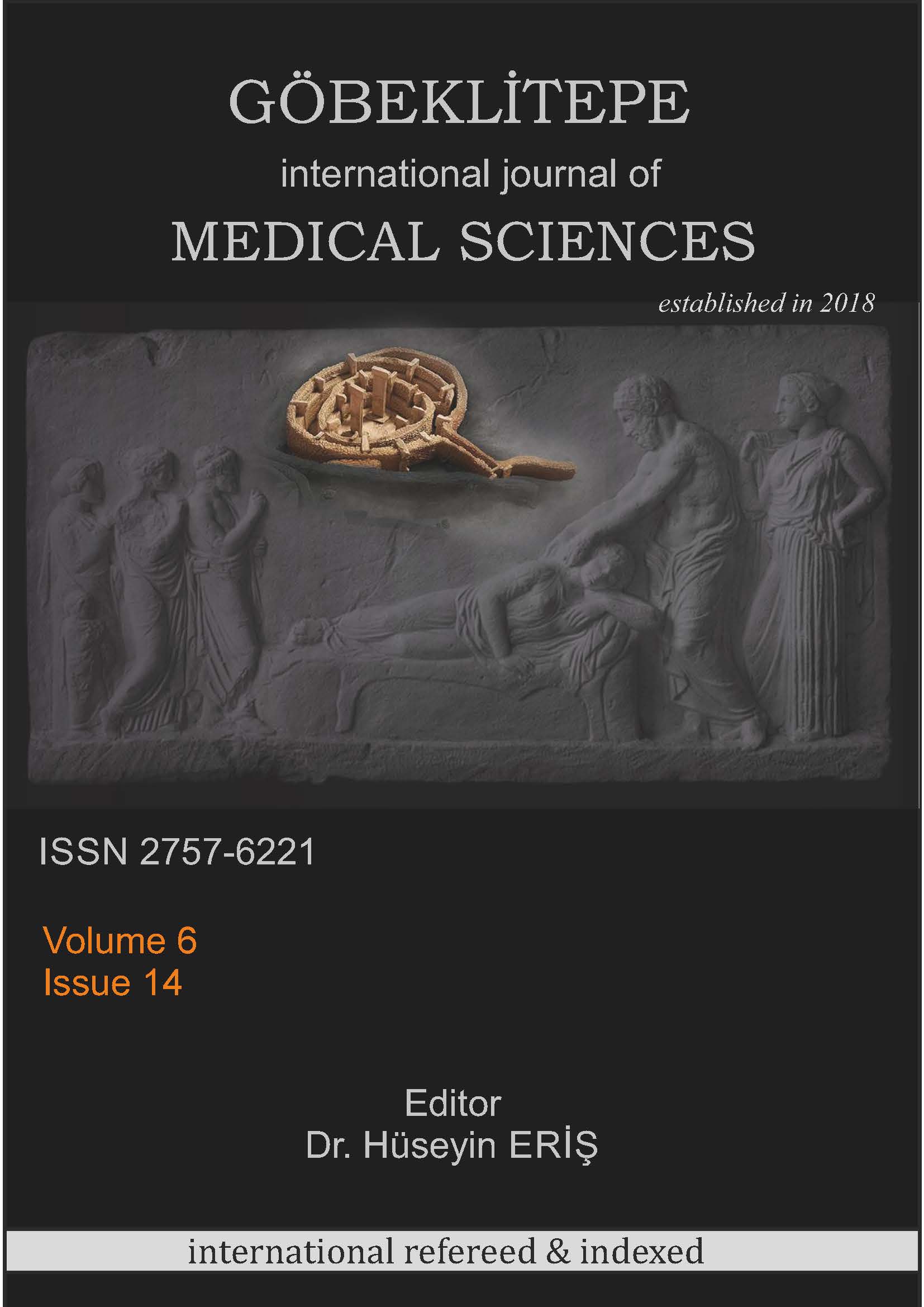POST-EARTHQUAKE CRUSH SYNDROME FROM A DISASTER NURSE PERSPECTIVE: A CASE REPORT
A CASE OF CRUSH SYNDROME
DOI:
https://doi.org/10.55433/gsbd/172Keywords:
Crush syndrome, Earthquake , Nursing CareAbstract
There are some medical conditions that nurses should be aware of during earthquake disasters. Crush Syndrome can be seen due to staying in certain positions for a long time under earthquake debris. The reperfusion, which starts immediately after the rescue of the earthquake victim, causes the contents, which are released after muscle cell destruction and have toxic effects on other organs, to pass into the systemic circulation. This is a serious condition that affects the body system. As a result, cardiopulmonary failure, diffuse edema, hyperkalemia, hyperphosphatemia, acidosis, coagulopathy, infections, and most importantly acute renal failure may develop and the patient may die. Medical treatment and nursing care to be applied are important. In this case report, information about a patient with crush syndrome who developed after an earthquake and an example of a nursing care plan is given. At the end of the health service he received, the patient was healed, his kidney functions improved, and his wounds became quite good. It has been concluded that it is very important for nurses to increase their knowledge about Crush Syndrome that can develop in disasters, to improve themselves, and to take part in every stage of disaster and crisis management with individual and social awareness.
References
AFAD. (2014). Açıklamalı Afet Yönetimi Terimleri Sözlüğü. (2014). T.C. Başbakanlık Afet ve Acil Durum Yönetimi Başkanlığı.
UNDRR, Office for Disaster Risk Reduction (2020) Hazard Definition & Classification Review. Geneva, Switzerland: Technical Report.
Taş, N. (2003). "Yerleşim alanlarında olası deprem zararlarının azaltılması". Uludağ Üniversitesi Mühendislik-Mimarlık Fakültesi Dergisi, 8(1), 225-231.giche, 108(1), 1-5.
(http://www.koeri.boun.edu.tr/scripts/lst6.asp.Erişim Tarihi: 06.02.2023).
(https://deprem.afad.gov.tr.Erişim tarihi: 21.03.2023).
Nowell L, Dhingra S, Andrews K, et al. (2021). A grounded theory of clinical nurses’ process of coping during covid-19. Journal of Clinical Nursing, 1–12.
Veenema, T. G. (Ed.). (2018). Disaster nursing and emergency preparedness. Springer Publishing Company.
Loke, A. Y., Guo, C., Molassiotis, A. (2021). Development of disaster nursing education and training programs in the past 20 years (2000–2019): A systematic review. Nurse education today, 99, 104809.
Brinjee, D., Al Thobaity, A., Almalki, M., & Alahmari, W. (2021). Identify the disaster nursing training and education needs for nurses in Taif City, Saudi Arabia. Risk Management and Healthcare Policy, 2301-2310.
Fletcher, K. A., Reddin, K., Tait, D. (2022). The history of disaster nursing: from Nightingale to nursing in the 21st century. Journal of research in nursing, 27(3), 257-272.
Eid-Heberle, K. Burt, S. (2023). Disaster education in the nursing curriculum: Embracing the past, learning from the present, preparing for the future. Journal of RadiologNursing.
Langan, J.C., Lavin, R., Wolgast, K.A., Veenema, T.G. (2017). Education for developing and sustaining a health care workforce for disaster readiness. Nurs. Adm. Q. 41, 118–127.
Kılıç, N., Şimşek, N. (2019). The effects of psychological first aid training on disaster preparedness perception and self-efficacy. Nurse education today, 83, 104203.
Akpınar, N. B. Ceran, M. (2020). Afetlerle ilgili güncel yaklaşımlar ve afet hemşiresinin rol ve sorumlulukları. Paramedik ve Acil Sağlık Hizmetleri Dergisi, 1(1), 28-40.
Gupta RD, Islam N, Debnath DK, Morshed SM, Rahman A. (2021). Acute Kidney Injury in Crush Syndrome and Renal Disaster-Experience in Bangladesh after garment factory collapse. Bangladesh J Medicine; 32: 107-112.
Vanholder R, Sever MS. (2012). Crush recommenda-tions: a step forward in disaster nephrology. Nephrol Dial Transplant; (27): 1277–1281.
Bitek, D. E., Dilek, F., Özgül, E. R. O. L. (2016). “Bir Kaçış Hikayesi” Crush Sendromu ve Hemşirelik Bakımı. Nefroloji Hemşireliği Dergisi, 11(1), 55-59.
Knott, L, Bonsall, A. (2015). Crush Syndrome. Meets Patient’s editorial guidelines Web Site. https://patient.info/doctor/crush-syndrome, 10.02.2023.
Kurultak, İ (2022). Deprem yaralanmalı erişkin hastada ezilme (crush) sendromu. TOTBİD Dergisi 2022; 21:294-303.
Sutera, D., Barbuscia, L., Bonarrigo, A., D'Angelo, G., & Gitto, E. (2020). Intensive management of a crush syndrome case. Atti della Accademia Peloritana dei Pericolanti-Classe di Scienze Medico-Biolo.
Jin H., Lin X., Liu Z., J. Wang, J. Wang, Y. Zhang, et al. (2022). Remote ischemic postconditioning protects against crush-induced acute kidney injury via down-regulation of apoptosis and senescence Eur J Trauma Emerg Surg, 48, pp. 4585-4593, 10.1007/s00068-022-01910-5.
Banerjee, A. (2017). Crush Injury, Crush Syndrome, Traumatic Rhabdomyolysis, Muscle Reperfusion Syndrome. Critical Care Medicine Cancer Therapy Advisor Web Site https://www.cancertherapyadvisor.com/home/decision-support-in-medicine/critical-care medicine/crush-injury-crush-syndrome-traumatic-rhabdomyolysis-muscle-reperfusion-syndrome/, 23.02.2023.
Bıçakçı, N., Karakayalı, O. (2022). Depremler ve Medikal Etkileri. Anatolian Journal of Emergency Medicine, 5(4), 203-208.
Qiao, O., Wang, X., Wang, Y., Li, N., & Gong, Y. (2023). Ferroptosis in acute kidney injury following crush syndrome: a novel target for treatment. Journal of Advanced Research.
Karahan, S., Bozkul, G., Sağdıç, B. Ç. (2023). Depreme Bağlı Yaşanan Ezilme Sendromu ve Hemşirelik Bakımı. Cumhuriyet Üniversitesi Sağlık Bilimleri Enstitüsü Dergisi, 8(1), 99-104.
Gündüz, F., Ersoy, G. (2022). 112 Ambulans Servisi Çalışanlarının Sahada Crush Sendromu Tedavisine İlişkin Bilgi Düzeyleri: İzmir İli Örneği. Hastane Öncesi Dergisi, 7(1), 37-50.
Odeh M. (1991). The role of reperfusion-induced injury in the pathogenesis of the crush syndrome. N Engl J Med. 16;324(20), 1417-22 doi : 10.1056/NEJM199105163242007.
Sever MS, Vanholder R. (2012). RDRTF of ISN Work Group on Recommendations for the Management of Crush Victims in Mass Disasters. Recommendation for the management of Crush victims in mass disasters. Nephrol Dial Transplant; 27(Suppl 1):1-67. Crossref.
Uysalol, M., Çağlar, A., Gültekingil, A., Türe, E., Tekşam, Ö., & Yıldızdaş, D. (2023). Depremde Çocuk Hastaya Yaklaşım. https://millipediatri.org.tr/Custom/Upload/files/depremde_cocuk_hastaya_yaklasim.cocuk_acil_ve_yogun_bakim_dernegi(1).pdf.
Akdam, H, Alp, A. (2015). Crush Syndrome. The Journal of Tepecik Education and Research Hospital, 25(2), 71-77.
Downloads
Published
Versions
- 2024-07-02 (2)
- 2023-12-24 (1)
How to Cite
Issue
Section
License
Copyright (c) 2023 Göbeklitepe Sağlık Bilimleri Dergisi

This work is licensed under a Creative Commons Attribution 4.0 International License.




